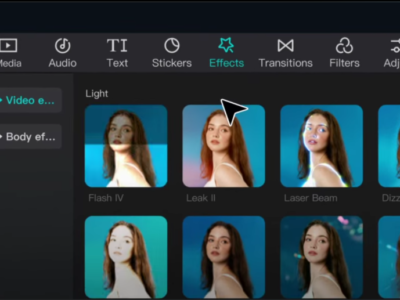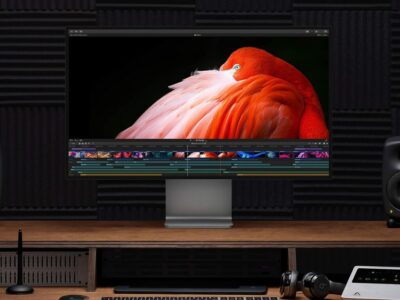Have you ever wondered why some videos look so crisp and clear while others don’t? The secret often lies in choosing the best video export settings. Whether you’re a budding YouTuber or an aspiring filmmaker, understanding how to set your videos for export in programs like Premiere Pro is key.
In this article, we will dive into the world of export settings and show you how to get the best quality out of your videos.
So, let’s get started and learn more about video projects!

The Importance of Best Video Export Settings
What exactly are “best video export settings”? Think of them as the recipe for how your video looks after it’s been cooked up in your editing software, like Premiere Pro. These settings decide everything from how sharp and clear your video is, to how large the file ends up being. They’re the finishing touches that can make or break your video’s quality.
Consider you have spent hours shooting and editing a video. Without the right export settings, all that hard work might not shine through. The right settings ensure your video looks just as good on someone else’s screen as it does on yours. They keep the colors vibrant, the motion smooth, and the details sharp.
Starting with Premiere Pro for Best Results
Adobe Premiere Pro is like a magic wand for video editors. It’s a powerful tool that helps you transform your videos into stunning visuals. But to get the best results, you need to know how to use it right, especially for export settings. Think of Premiere Pro as your assistant that makes sure your video looks top-notch when you share it with the world.
For beginners eager to learn how to become a video editor, starting with Premiere Pro might seem a bit daunting. Don’t worry, it’s simpler than it looks. First, make sure your project settings match the type of video you’re working on. This sets the stage for everything else. Then, as you get ready to export, take a peek at the export settings. This is where you decide how your video will look once it’s out of Premiere Pro. By choosing the right settings here, you ensure your video looks as good as it can be, no matter where it’s played.
Step-by-Step Guide to the Best Video Export Settings in Premiere Pro
Getting the best video export settings in Premiere Pro is not as tricky as it sounds. Here’s a simple guide to help you out. First, finish your video editing and click on ‘File’, then ‘Export’, and choose ‘Media’. This opens the export settings window.
Now, let’s focus on three main things: resolution, frame rate, and format. For resolution, choose the same as your original footage for the sharpest quality. For frame rate, again, stick to the original rate of your video. It keeps the motion smooth.
For format, ‘H.264’ is a great choice for most videos. It balances quality and file size nicely, making your videos look good without being too big. Remember, these settings can vary based on what you need, but they are a solid starting point for anyone learning how to become a video editor.
Film Composition Examples
Within this FREE PDF, you will discover:
- film composition examples in movies
- how filmmakers employ composition techniques
- how to create unforgettable cinematic experiences

Resolution and Bitrate – Pillars of Best Export Settings
Resolution and bitrate are like the backbone of your video’s quality. Getting them right is crucial for the best video export settings in Premiere Pro.
Resolution is all about how many pixels your video has. More pixels mean a clearer, sharper image. For most projects, you should match the resolution to your original footage. If you shot your video in 1080p, stick with that when exporting.
Bitrate is about how much detail each second of your video has. A higher bitrate means more details, but also a larger file. In Premiere Pro, if you’re exporting for online use, like YouTube, a bit rate between 10-20 Mbps for 1080p videos works well. It’s a sweet spot that keeps your video looking good without making the file too huge.
Format and Codec – Making the Right Choice for Best Output
Choosing the right format and codec is like picking the best outfit for your video. It makes a big difference in how your video looks and feels. In Premiere Pro, you have several options, but let’s focus on the best ones for most users.
The most popular format is ‘H.264’. It’s widely used because it gives good quality without making the file too big. It’s great for videos you want to upload to the Internet. If you’re working on something that needs super high quality, like a film project, ‘ProRes’ or ‘CineForm’ might be better choices. They keep more details but create larger files.
For codecs, think of them as the language your video speaks. ‘H.264’ is a codec too, and it’s perfect for most projects. It makes sure your video can be played on almost any device, which is super handy.
Audio Settings and Sync – Perfecting Your Export
Besides visuals the sound is super important too. In Premiere Pro, getting your audio settings right is a big part of creating the best video export settings. Here’s how to make your video sound as good as it looks.
First, check your audio format. ‘AAC’ is a great choice for most videos. It offers clear sound without taking up too much space. Next, look at the bitrate. A bit rate of 320 kbps is perfect for high-quality sound. It’s like making sure every word and note in your video is heard clearly.
Also, don’t forget to sync your audio and video perfectly. In Premiere Pro, you can adjust the timing to make sure the sound matches what’s happening on screen. This keeps everything looking and sounding professional.
Conclusion
Mastering the best video export settings in Premiere Pro is key for any video editor. It’s about making your work shine. We hope these tips help you on your journey. Feel free to share your experiences or questions about Premiere Pro settings below.
Film Composition Examples
Within this FREE PDF, you will discover:
- film composition examples in movies
- how filmmakers employ composition techniques
- how to create unforgettable cinematic experiences

Explore related content

Video Editing Tips CapCut: Tips, Tricks, and Techniques
Video editing is an art, and there are proper tools and techniques, through them everybody… Read More »Video Editing Tips CapCut: Tips, Tricks, and Techniques

Factors to Consider Before Buying a Video Editing Computer
From helping grow your brand and business to editing just for fun with the love… Read More »Factors to Consider Before Buying a Video Editing Computer

Best Video Editing Monitors in 2024
In the evolving world of video production, the importance of a high-quality monitor cannot be… Read More »Best Video Editing Monitors in 2024